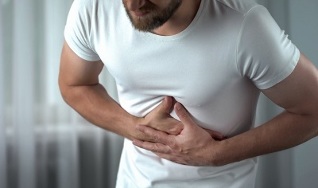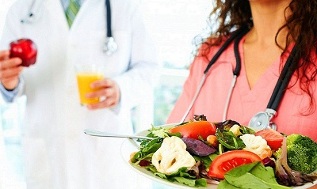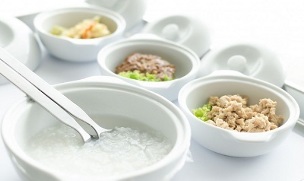Pancreatitis is a disease in which the pancreas is inflamed. This plays a big role in the digestive system - it regulates energy metabolism, synthesizes digestive juices, and is responsible for breaking down carbohydrates.
The enzyme enters the stomach first, and then into the duodenum, where it is first activated. If the pancreas is inflamed, the enzyme begins to "function" at an early stage - that is, even before excretion. Damage appears - the gland begins to digest itself, which provokes the death of some pancreatic cells.

Pancreatitis can be caused by:
- infectious diseases not related to the digestive system - for example, seasonal ARVI;
- gastrointestinal tract disease;
- unhealthy diet;
- pressure;
- alcohol abuse.
Pancreatitis can develop in several forms - acute, reactive and chronic. In the acute state, the pancreas can be completely or partially inflamed, reactively developing against the background of diseases of the digestive system - gastric ulcers and duodenal ulcers, gallbladder or liver.
Chronic forms can disappear over a long period of time, and often the disease progresses slowly. In most cases, inflammation reappears when the diet is disrupted.
The nature of diet in pancreatic pancreatitis plays a huge role - it is impossible to prevent deterioration without adhering to a special diet. What is this diet, and what are the menu principles for pancreatitis?
Principles of nutrition for inflammation of the pancreas
The main principle, set in the diet, in which the work of the pancreas is normalized, is to minimize the load on the digestive organs as much as possible.
For adults during exacerbations, the doctor gives the following recommendations - "hungry, cold and rest. " If the patient is in the hospital and the pancreatitis is in the acute stage, then he is advised to refuse food for 2-3 days, and useful substances -salt and fluid - enters the body droplets. If you are hungry at home, then it is impossible to ensure a complete balance of water and electrolyte levels. You must and can drink, but only in small portions.
Even adults need to increase their nutrient storage. Diet specially designed to save. The most "proven" of them is table number 5.
Principles of this diet:
- creates the softest conditions for the stomach and intestines - using mechanical and chemical loading;
- eliminates pancreatic dysfunction;
- to prevent negative changes in liver tissue - fat infiltration;
- reduces the joy of the gallbladder.
Diet should be followed not only during the treatment of this disease, but also for another year after its release.
The main properties of diet in the treatment of pancreatitis:

- In the daily menu, you should limit the number of products containing ingredients that have an extractive effect - stimulate the production of pancreatic enzymes:
- fireproof fat;
- purin;
- essential oils;
- cholesterol;
- coarse fiber;
- glucose.
- Diet - foods high in protein, reducing the amount of carbohydrates and fats
- Cooking technology - cooking, steaming dishes, grilling in foil, stew.
- Breakdown of food - up to 6 times a day, in small portions. You need to get up from the table with a lack of nutrients, so as not to overload the pancreas.
- The first time after joy, you can only eat purified food.
- Seasonings - including salt - must be temporarily left out;
- You can not eat hot and cold food, food should be heated to about body temperature - 36 ° C.
Limited drinking regime. You can drink as much as you want only when the urge to vomit has completely disappeared.
Do not be afraid of dietary restrictions in the first days after the attack - fasting during treatment is only useful.
Diet menu for pancreatitis
When compiling the menu for a few days with an increase in pancreatitis, you should immediately take into account its features - the product must be rubbed. For example, if the meat - then soufflé or meatballs, potatoes - mashed potatoes, and so on. . .
The menu consists of the following products - their estimated list:
- baby food - you can use what is packaged in jars and powders, which are then diluted with liquid;
- mashed potatoes, from cauliflower or white cabbage;
- purified cottage cheese.
The share of nutrients in the daily menu - fat - 50-70 g, protein - 130-150 g, carbohydrates - 300-320 g.
About 2-4 days after exacerbation, nausea disappears, and it is necessary to restore the amount of fluid in the body. You need to drink about 1. 5 liters of water per day, in one small sip, a glass every 6 hours. More “heavy” dishes are included in the diet gradually, after pain relief, one name for each meal.
From now on - about the 4th day - the menu includes the following dishes and products:
- kefir - low fat only;
- chicken breast broth;
- protein omelet;
- juice from non-acidic berries, diluted with half water;
- rebo rosehip;
- up to about 30 g of honey per day;
- dry wheat bread;
- crackers or biscuits without sugar;
- boiled pasta - you should not use pasta or curls, preference should be given to small vermicelli;
- porridge is rubbed through a sieve, with pancreatitis, you can cook it from buckwheat, oatmeal (some nutritionists allow eating semolina, but it must be cooked completely so as not to swell in the stomach).
You can eat the following foods:
- lean meats - chicken breast, beef, rabbit meat;
- fish - boiled, but you can only use meat, fish soup and other soups in fish broth;
- fruit - baked or ground;
- meat broth - secondary;
- Purified vegetables - broccoli, cauliflower, pumpkin.
The nature of the diet in pancreatitis depends on the general condition of the patient.
How diet patterns change in pancreatitis
The diet menu estimates in the first days after the onset of chronic pancreatitis look like this:

1 day:
- breakfast - half a serving of slimy oatmeal soup and half a glass of mineral water;
- snack - skinless baked apples and sugar;
- lunch - mashed potatoes - also half a portion - with milk, without spices;
- afternoon tea - jelly flour and rusk;
- dinner - buckwheat porridge with weak tea, whitening milk;
- bedtime - some milk is diluted with water.
Day 2:
- breakfast - steamed protein omelet, chamomile broth;
- snack - roasted pears;
- lunch - pearl barley soup, grated on water, croutons with compote;
- afternoon tea - milk soufflé;
- dinner - semolina porridge, mashed dried fruit, weak tea;
- sleep - half a glass of rosehip broth.
Furthermore, the diet can be a little weak - if the situation returns to normal:
- breakfast - oatmeal with dried fruit, preferably with raisins, rosehip broth;
- snack - raw bananas;
- lunch - steamed fish with carrots, dried fruit compote;
- afternoon tea - cottage cheese seasoned with honey;
- dinner - milk porridge with weak tea;
- bedtime - half a glass of liquid milk.
Diet for chronic pancreatitis, when the condition returns to normal, may look like this - daily menu example:
- breakfast - vegetable puree, a piece of meat soufflé, juice diluted with water, weak tea;
- snacks - protein omelet, steamed chicken breast pieces, a slice of dry bread, kefir;
- lunch - small noodles in chicken breast broth, boiled vegetables with a slice of steamed fish, bread, dried fruit compote;
- afternoon tea - crackers with sweet berry jelly, maybe a little honey;
- dinner - steamed meatballs, rice porridge (or mashed potatoes), boiled vegetables, tea.
If you feel hungry before bed, you can eat crackers, sweet fruit, drink a glass of kefir.
A well-planned menu in the treatment of pancreatitis will help the disease quickly disappear. The diet should be followed for one year after the last deterioration.































